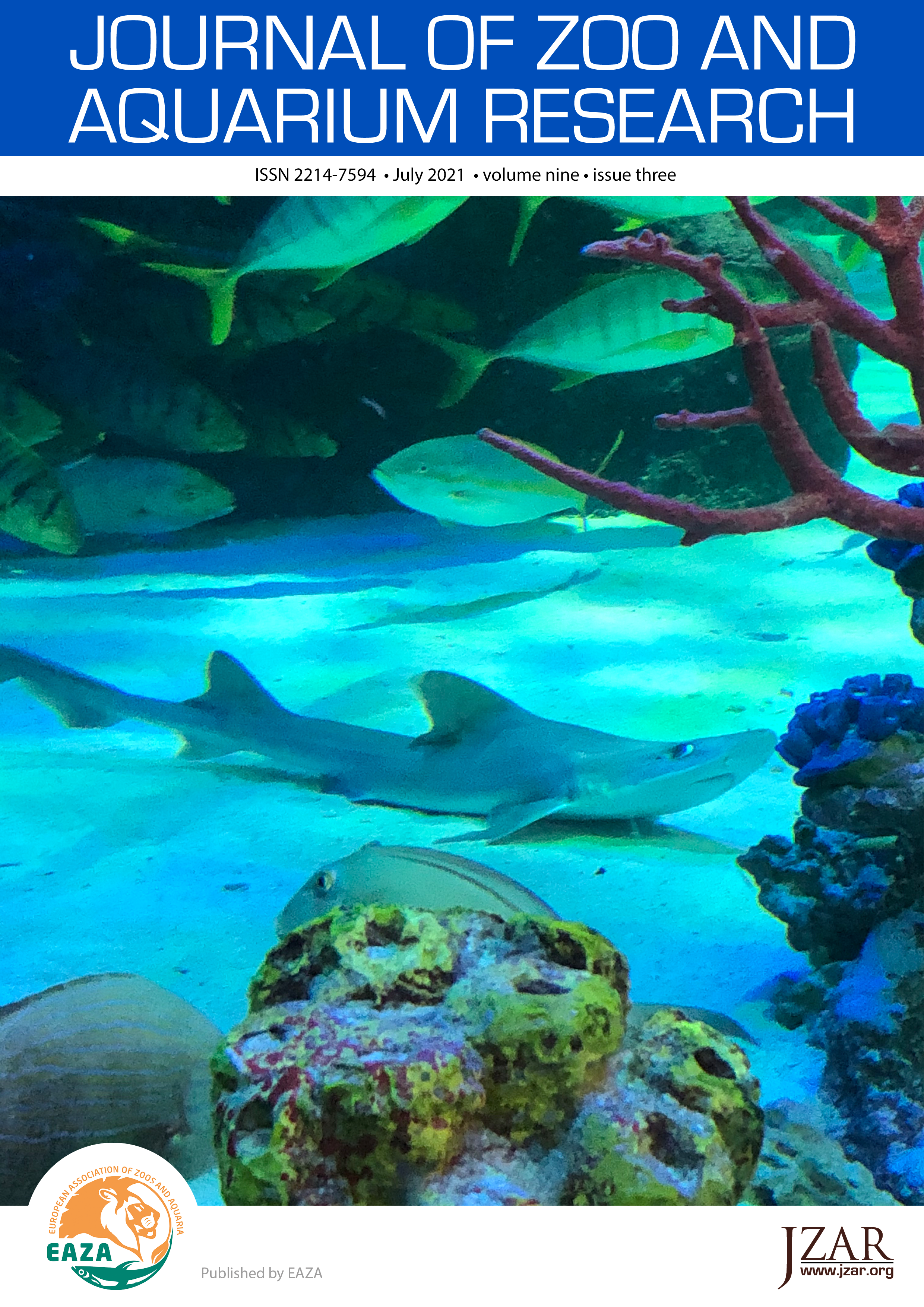Development of an image-based body condition score for giraffes Giraffa camelopardalis and a comparison of zoo-housed and free-ranging individuals
DOI:
https://doi.org/10.19227/jzar.v9i3.615Keywords:
Body conditions score, Free-ranging, giraffe, PMS, zooAbstract
Historically, giraffes (Giraffa spp.) in zoos are known to have a high prevalence of deaths associated with serous fat atrophy, which has been linked to the impression that as browsers, they are more difficult to feed appropriately compared to grazing ruminants. Therefore, one could expect zoo-housed giraffes to be peculiar in that they might have, on average, a lower body condition than their free-ranging conspecifics. We collected photographs of free-ranging and zoo-housed individuals and used information on sex, age, body mass, and height for a subset of the zoo animals to develop and validate a body condition score (BCS). We developed an overview BCS for the shoulder area (4 levels) and hip area (7 levels), and validated and applied the score to 532 free-ranging and 232 zoo-housed giraffes. The rib area was not useful for BCS; skin folds in the rib area occurred across all BCS hip levels but were particularly prominent at higher BCS hip. The BCS hip was positively correlated with body mass index for adult female giraffes, suggesting it reflects body condition. The BCS hip differentiated better between age, gender, season in free-ranging animals, and habitat (zoo vs. free-ranging). The BCS shoulder was less precise, most likely because the visibility of the shoulder does not only reflect subcutaneous adipose tissue, but also muscle tissue and skin thickness, especially in males as an adaptation to the giraffe’s typical mode of intraspecific combat. Using the shoulder score or the presence of skin folds on the side of the thorax/abdomen for routine BCS application is therefore not recommended. Juvenile animals had the highest BCS hip (6.04±0.69 for free-ranging, 6.00±1.07 for zoo), which decreased with age in both populations. Adult males in the wild generally had higher BCS hip (3.52±1.35) scores than the females in the wild (3.31±1.31), indicating the increased energetic strain on females due to reproduction. This was not the case in zoo animals. In contrast to our prediction, zoo-housed animals had higher scores than the free-ranging population (4.53±1.54; 3.74±1.55; P<0.001), especially compared to the free-ranging population scores from the end of the dry season (3.46±1.56; P<0.001). This indicates that on average, zoo-housed giraffe are less constrained by dietary resources than their free-ranging counterparts, and corresponds to reports of an improvement of zoo diets in European zoos and the subjective impression of a reduced incidence of serous fat atrophy in recent years. Nevertheless, the highest score, often equated with obesity in other BCS systems, was observed in both zoos and in the wild, possibly excluding obesity as a pathological condition in this zoo-housed giraffe population. While low scores should be avoided in zoo-housed giraffes, there are no indications so far that high scores in our BCS are detrimental. The hip-based BCS is easily applicable to free-ranging animals by direct observation or based on photographs, and allows for reproducible data collection to monitor giraffes at a population level.
Downloads
Published
How to Cite
Issue
Section
License
JZAR fulfils the DOAJ definition of open access and provides free and open access to the full text of all content without delay under a Creative Commons licence. The copyright holder of JZAR publications grants usage rights to third parties, allowing for immediate free access to the work and permitting any user to read, download, copy, distribute, print, search, or link to the full texts of articles.







